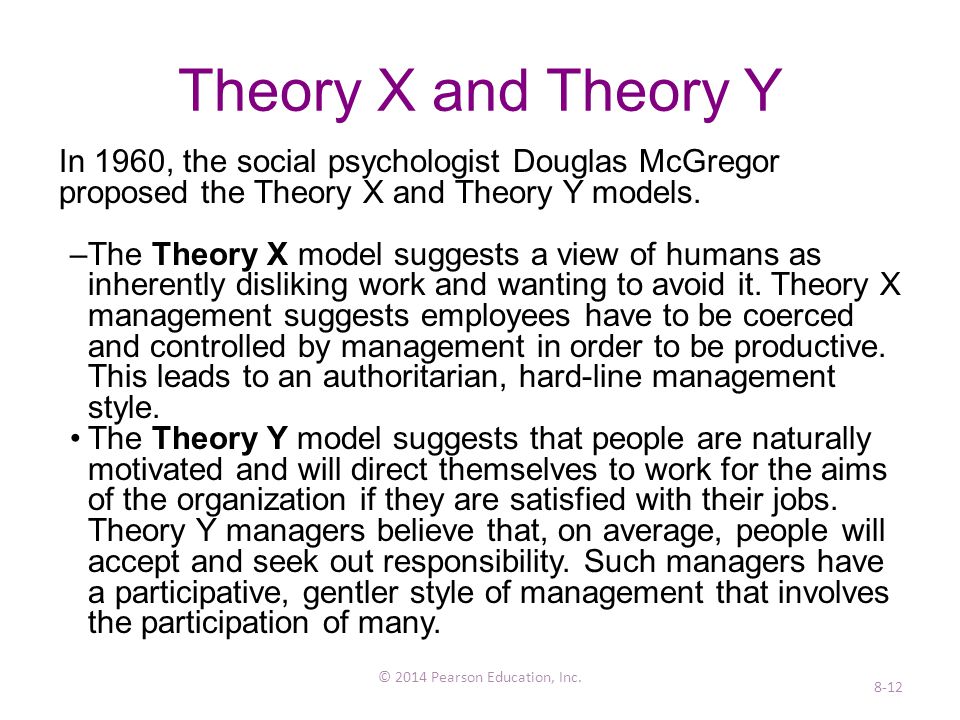Douglas Mcgregor Theory X Theory Y Pdf Merge Tool

This article describes the McGregor Theory X and Theory Y of. Flash usb repair v2 9 1 1 zip system. After reading you will understand the background and the practical basics of these leadership styles. The McGregor Theory X and Theory Y In 1960, developed a leadership theory (McGregor Theory X and Theory Y) about organization and management in which he represented two opposing perceptions about people.
He referred to these two perceptions as Theory X and Theory Y. Then arrived at the conclusion that the style of leadership depends on the manager’s perception of people. Theory X In Theory X, summarizes the traditional view of management in a number of characteristic assumptions in which style, close supervision and the hierarchical principle are the key elements. Theory X starts from the assumption that people are naturally lazy, want to avoid work as much as possible, do not wish to take responsibility, have no ambition and prefer to be supervised.
Physical system, Theory X and Y considered as ‘models’. Douglas McGregor is the one who constructed Theory X and Y in the 1960s. Theory X and Y created by McGregor has been a valid basic principle from which to develop positive management style and techniques. McGregor's ideas suggest that there are two. McGregor (2000) has pointed out that theory X management assumes that people generally are not responsible for work in contrast to theory Y assuming that people are invariably self-controlled. Tablica stepenej. However, the theory X assumption is exaggeratedly negative while the theory Y assumption is overly optimistic.
The authoritarian leadership style is therefore the most appropriate leadership style in Theory X. According to this theory, pure work motivation consists of financial incentives. People want to avoid work and they must be continually coerced and controlled. Therefore, the system of rewards and punishments works best for them. Furthermore, their tasks and how these should executed must be laid down in detail. According to this theory, people definitely do not wish to bear any responsibility for their work.
Theory Y Unlike in Theory X, starts from the assumption in Theory Y that people have different needs. Theory Y assumes that people are inherently happy to work, they want to exert themselves and they are motivated to pursue objectives. There is no need for the system that involves rewards and punishments. People are prepared to take responsibility for everything they do.
People want to use their creativity and they like to take a creative problem solving approach. Principle of theory Y The central principle of Theory Y is that of integration: individuals can achieve their own goals by also focusing their efforts on the objectives of the organization they work for. They want to get the most out of their work through satisfaction, appreciation and motivation. Theory Y invites renewal processes and motivation can be traced back to the style of leadership. Theory Y therefore assumes that control, rewards and punishments are not the only ways to stimulate people. People can focus on the objectives they pursue through self-direction and self-control.
Capabilities A democratic leadership style arises on the basis of Theory Y which allows the employees to have a greater say. Encouragement and rewards are used rather than control and coercion. Employees are given an opportunity to develop themselves and put their capabilities to good use. When an organization does not respond to this, employees will start looking for possibilities to deploy their skills outside their work. Initially, they will focus on hobbies, committee and voluntary work, but eventually this could result in a hunt for another job. Critical note on the McGregor Theory The McGregor Theory X and Theory Y are not based on a single truth.
Theory X managers and Theory Y managers often see their perceptions of people confirmed. The democratic approach of Theory Y makes people feel comfortable as a result of which they commit themselves wholeheartedly to the organization. Managers who build on the basic principles of Theory X, are often met with a vicious circle in which their suppositions become reality and in which cause and effect are reversed. Their employees are accustomed to coercion and control and will therefore not make any effort at all or bear responsibility. A good manager will realize that leadership affects employee behaviour. In addition to their preference for a certain leadership style and the work that has to be done, a manager will either opt for Theory X or Theory Y. Theory X will sooner be implemented in industrial organizations where activities revolve around a high degree of productivity.